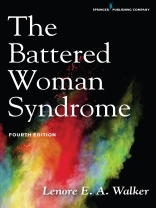With its focus on the connection between health and mental health symptoms, this seminal, groundbreaking work continues to forge new directions in the field of domestic violence. Describing a condition that is the basis for the battered woman defense–cited in cases of physically and psychologically abused women who have killed their abusers–it continues to be used as a defense to explain premeditated assault or murder. Completely updated, the fourth edition reflects the significant changes in the field since the book was last published, incorporating Affordable Care Act (ACA) guidelines on health care and domestic violence and data from the Adverse Childhood Experiences Study. It examines new research regarding battered women and cross-cultural and cross-national issues, and includes several new chapters addressing issues ranging from murder–suicide in domestic violence cases to proposed legislation and congressional resolutions.
The fourth edition provides new findings worldwide that reinforce the cycle theory of violence. It reflects new research on traumatic responses, and addresses trauma-informed and trauma-specific psychotherapy, interventions with youth in juvenile detention centers, information from government task forces regarding children exposed to violence and juvenile justice, and new findings regarding the application of psychology to the legal system. Entirely new to the fourth edition is a section about reforming family court and divorce presumptions. This is crucial reading for nearly all health and mental health workers who may be called upon to ask clients about experiences of domestic violence and must respond knowledgeably and effectively.
New to the Fourth Edition:
- Fully revised and updated
- Incorporates ACA guidelines on health care and domestic violence
- Includes data from the Adverse Childhood Experiences Study
- Addresses findings regarding battered women and cross-cultural and cross-national issues New chapter on murder–suicide in domestic violence cases
- New chapter on trauma treatment for victims of intimate partner violence (IPV)
- New chapter on human trafficking and sexual exploitation of children
- New chapter on false confessions of battered women
Tabela de Conteúdo
CONTENTS
Preface
Acknowledgments
Part I: Myths and Science of Domestic Violence
1 The Battered Woman Syndrome Study Overview
2 History
3 What Is the Battered Woman Syndrome?
4 Learned Helplessness, Learned Optimism, and Battered Women
5 Descriptions of Violence and the Cycle of Violence
Part II: Interaction of Intimate Partner Violence and Other Family Violence
6 Impact of Violence in the Home on Children
7 Child Abuse and Domestic Violence
8 Sex Trafficking of Children
9 Battered Women’s Attachment Style, Sexuality, and Interpersonal Functioning
10 Murder-Suicides and Self-Defense
11 Cross-Cultural and Cross-National Issues in Domestic Violence
Part III: Intervention Strategies
12 Risk Assessment and Lethal Potential
13 Battered Women’s Health Concerns
14 Mental Health Needs of Battered Women
15 Substance Abuse and Domestic Violence
16 Trauma-Informed Psychotherapy
17 Survivor Therapy Empowerment Program (STEP)
Part IV: Application of Psychology to the Legal System
18 False Confessions of Battered Women
19 Family Court, Child Custody, and Domestic Violence
20 Domestic Violence Courts and Batterers’ Treatment Programs
21 Battered Women in Criminal Court, Jail, and Prison
Index
Sobre o autor
Lenore E. A. Walker, Ed D, is a professor at Nova Southeastern University (NSU) College of Psychology, where she is also a coordinator of the clinical forensic psychology doctoral concentration and director of the master’s in forensic psychology program.












